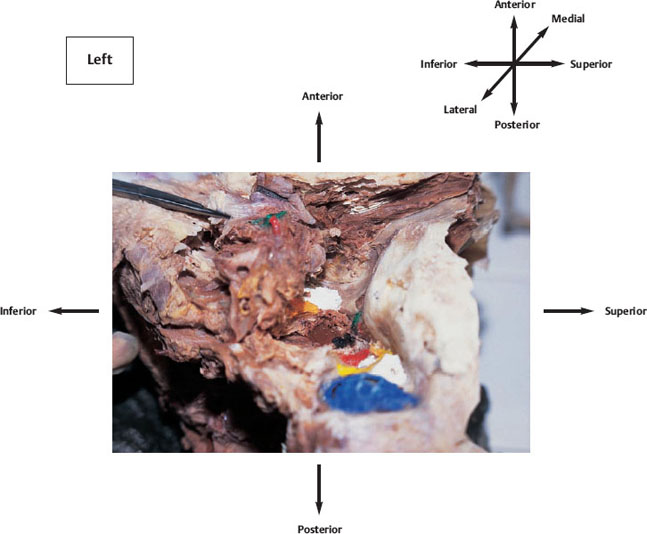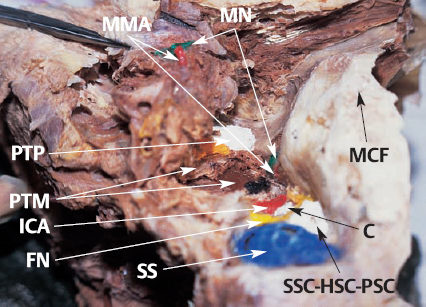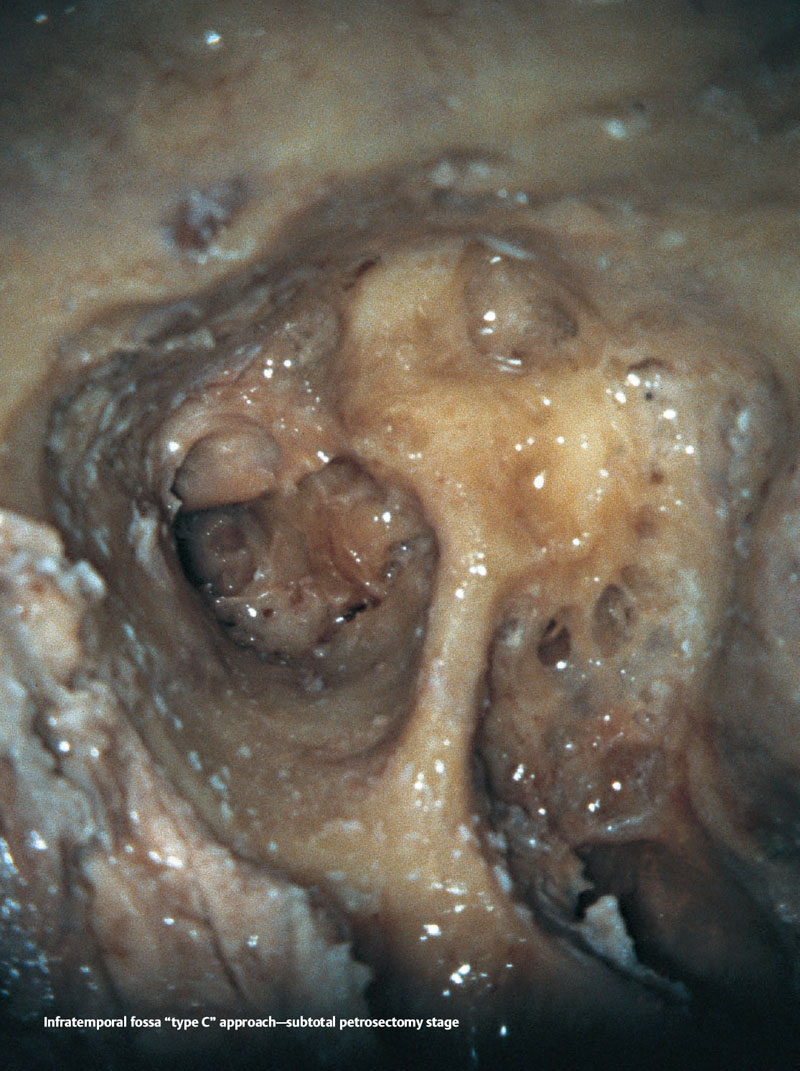25 Infratemporal Fossa “Type B” Approach Following a subtotal petrosectomy, proceeding with drilling more anteromedially along the glenoid fossa and exposure of the pterygopalatine fossa, parasellar region, and nasopharynx. At the end of this approach, temporal muscle is transposed in the cavity rather than fat obliteration and a “blind sac” closure of the external auditory canal is carried out. An infratemporal fossa “type C” approach is mainly carried out for pathologies on the neighboring regions surrounding the nasopharynx, such as advanced nasopharyngeal angiofibroma or radiotherapy-failed nasopharyngeal carcinoma. The left side of a cadaver, including the base of the skull, has been dissected to present the infratemporal fossa “type C” approach comprehensively. The important anatomical structures have been exposed and dyed for illustrative purposes. The figure displays a general view of the surgical site at a stage where the pterygoid processes are intact. C: Cochlea FN: Facial nerve HSC: Horizontal semicircular canal ICA: Internal carotid artery MCF: Middle cranial fossa (dural plate) MMA: Middle meningeal artery MN: Mandibular nerve PSC: Posterior semicircular canal PTM: Pterygoid muscles PTP: Pterygoid process SS: Sigmoid sinus SSC: Superior semicircular canal
Definition
Indications
Anatomical Orientation

Surgical Anatomy

Infratemporal Fossa “Type B” Approach
Only gold members can continue reading. Log In or Register to continue

Full access? Get Clinical Tree



